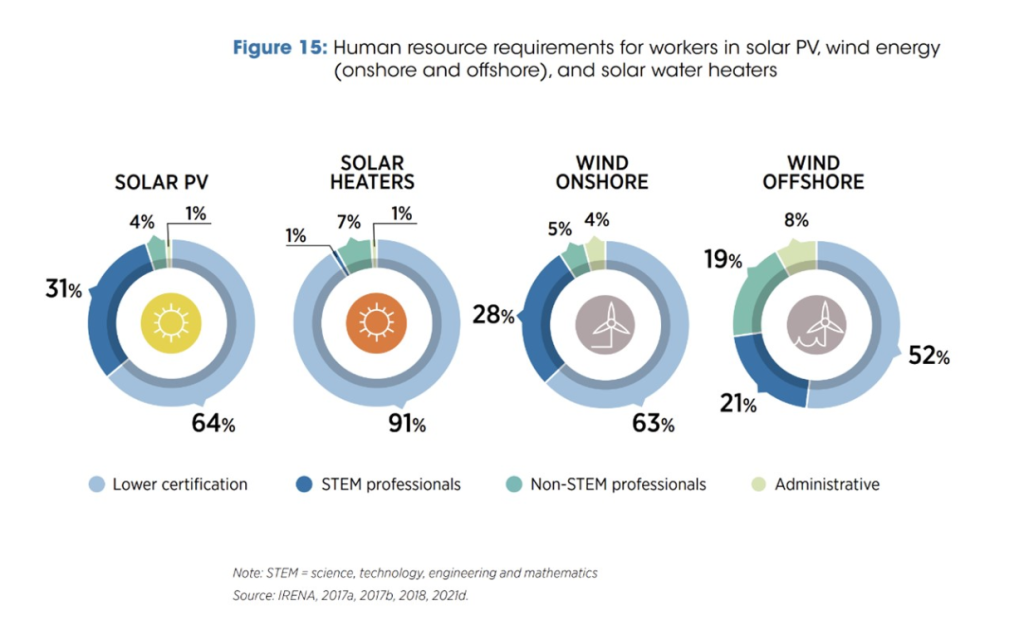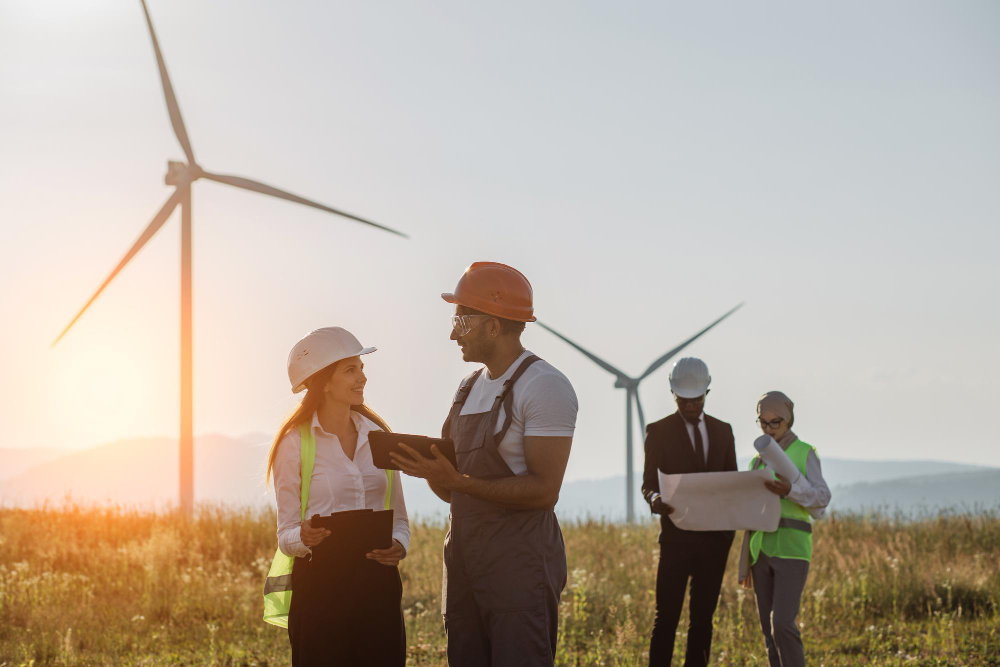One of the myths about the energy transition is that it will lead to a sharp rise in energy prices. However, the EU is putting a strong emphasis on equity in the energy transition, i.e. getting clean and affordable energy products to the whole population. To support the concepts of social inclusion and equity, a dedicated mechanism has been created at European level, Just Transition MechanismThe European Commission has adopted a Communication on the "European Social Fund", which mobilises €55bn between 2021 and 2027 for actions to improve the socio-economic impact of specific regions.
Because the market for sustainable fuels is still forming, their prices are still high. The best example is green hydrogen. But with widespread use and increasing demand, prices are expected to fall.
The energy transition brings more benefits to communities and citizens than just access to clean energy:
CLEANER ENVIRONMENT
The energy transition involves several changes in the technologies used. These include:
-
- Clean energy production.
- Energy efficiency.
Renewable energy production leads to lower CO2Solar, wind and geothermal energy all provide zero-emission energy for people and industry. The use of electric and hydrogen-powered cars will also lead to a reduction in noxious and health-damaging particles.
In terms of making energy use more efficient, this means not only building envelope but also implementing technologies to reduce energy consumption. Often, these technologies are designed to use less polluting fuels, which contribute to a healthy environment. An example would be replacing coal with natural gas for heating, a fuel that is considered transitional because of the lower amount of CO₂ emitted into the atmosphere.

MAINTAINING AND CREATING NEW JOBS
Renewable energy developed in the years to come will lead to new jobs, but also to the maintenance of many existing ones.
IRENA determined the number of working hours required for certain types of renewable energy:
-
- For a PV capacity of 50 MW, 230,000 man-hours are needed - calculated for the employees involved along the entire production chain.
- For the same capacity, but onshore wind, 144,000 thousand man-hours are needed.
- For 500 MW offshore wind, 2.1 million hours are needed. Due to similarities with the offshore oil and gas sector, some skills can be transferred, following specific training.
The highest number of hours are required for maintenance, procurement, manufacturing, construction and installation.

Source: https://www.irena.org/Energy-Transition/Socio-economic-impact/Local-value-creation
Energy transition requires continuity in various areas:
-
- H₂ and CO₂ transport in carbon capture, transport and geological storage (CCS) technology will be carried out by experts from the oil and gas sector.
- Production of offshore wind energy faces challenges similar to those of an offshore gas production platform (especially in terms of protection against natural factors and issues of maintenance, transportation of crews, etc.). Therefore, the experience can be shared, although the field of activity is different.
- The CO₂ storage needed to decarbonise certain industries can be done in depleted hydrocarbon fields, where all the know-how of the oil and gas industry will be applied. The experience gained by this industry can also be used to harness geothermal energy, with the benefit of a clean, low-cost heating method, which is very important for the community.
Success stories in renewable energy use in Romania
The use of geothermal energy - which can be harnessed by using geothermal springs, but also the heat of the rocks in the Earth's crust - means both less pollution and lower energy prices for people.
In 2023, Oradea inaugurated a geothermal water heating system, with the help of heat pumps, serving 5000 inhabitants. The construction of the geothermal station was financed by a European project worth €3.8 million, of which the Norwegian funding programme provided €1.7 million and the municipality contributed €2.1 million.
Another town that uses geothermal energy is Beiuș, which boasts the following the lowest heating price in Romania.
LOCAL ECONOMIC GROWTH
The development of the new technologies involved in the energy transition will also have a positive impact on the communities hosting the new facilities.

New technologies require significant investment, part of which comes back to the community through taxes. Of course, new production facilities mean both direct and indirect jobs in the budget system, but also in the local economy at partner companies.
Positive impacts also come from the new dynamics of some locally sourced raw materials: for example, biofuel production can lead to better selling prices for agricultural products and better farm development.
Hydrogen Valley - continuity of certain (mono)industrial areas
Hydrogen, and green hydrogen in particular, is enjoying increasing interest because of its many uses:
-
- Mixed with natural gas, it can be used for heating fuel, supporting the decarbonisation of the buildings sector. A first pilot project ended in Romania in early 2024.
- It is a zero-emission fuel (only water is produced by burning it), which is particularly suitable for long-distance transport.
- Can be used for storing surplus renewable energy.
Last but not least, it can be used to decarbonise certain industries - for example steelmaking. The use of hydrogen is vital to produce green steel, the only competitive steel on the market with the introduction of carbon certificates.
In this context, the concept of hydrogen valley or hydrogen hub has emerged, which refers to areas that integrate the entire hydrogen 'ecosystem': production, storage, distribution and use.
In May 2023, there were approximately 82 Hydrogen Valleys around the world, and these areas are proving to be platforms for collaboration between industry, government, research institutions for the development of green hydrogen, an important component of the energy transition. In Romania, the city of Galati steelworks existing here and the opportunities for renewable energy development, it has the economic potential to become a green hydrogen valley, which would allow industrial continuity in the area.
In terms of the benefits of developing such areas for local communities, these mainly relate to the maintenance of certain industries, the development of renewable energy capacities, the emergence of new production facilities, the creation of new jobs.
In addition, hydrogen valley is a pole of innovation, with openings for new technologies in electrolysis, storage, transport and energy generation. This can lead to increased local prestige, the creation or maintenance of highly skilled jobs and reduced migration.
Local production of green hydrogen, using renewable energy by definition, means clean heating and transport resources for the locality, the primary beneficiaries of technological innovation. It means limiting the use of conventional fuels, with less pollution.
The development of renewable energy generation means a secure local energy supply with reduced dependence on fuel from other areas.
For more information on hydrogen valley projects, please see this information mapwhere you can also see the stages of development at each point.





